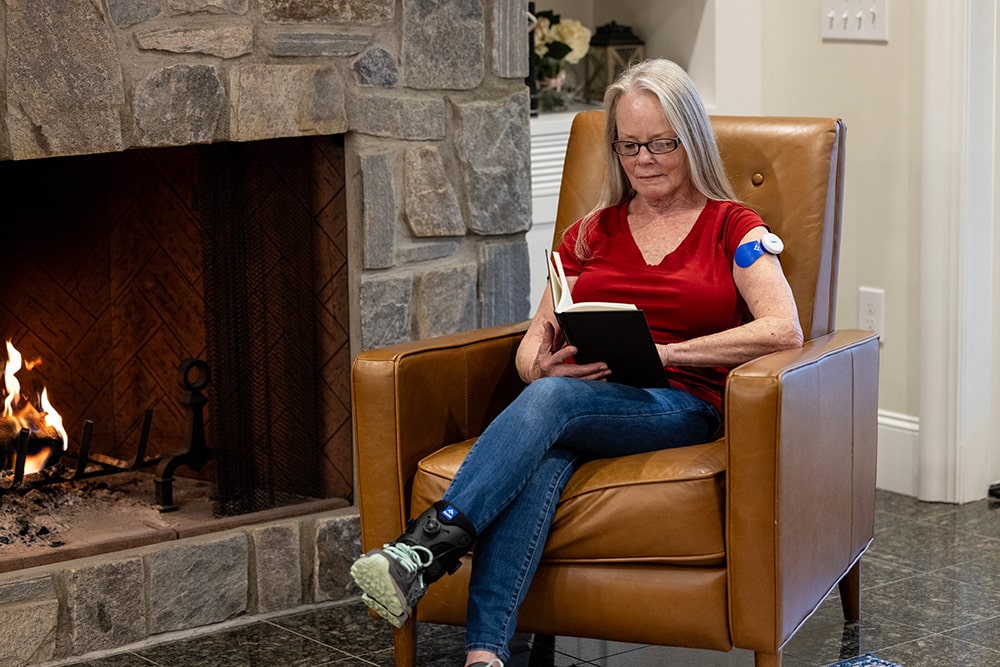
Shoulder Subluxation
Shoulder subluxation is a common complication that affects up to 80% of stroke survivors. It occurs when the upper arm bone, called the humerus, becomes partially dislocated from the shoulder socket due to muscle weakness, paralysis, or spasticity.
This condition can cause pain, loss of function, and difficulty performing daily activities, significantly impacting the quality of life for stroke survivors. This article will delve into the causes, evaluation methods, and treatment options for shoulder subluxation in hemiplegic (paralysis on one side of the body) patients.
Understanding Shoulder Subluxation Post-Stroke
What is Shoulder Subluxation?
A stroke can often result in shoulder subluxation, a condition wherein the arm partially dislocates from the shoulder socket due to muscle weakness or paralysis. This shift in the arm's position can lead to discomfort and limit the range of movement, affecting the patient's quality of life.
Causes of Shoulder Subluxation
Shoulder subluxation is caused primarily by muscle weakness. When the muscles surrounding the shoulder, known as the rotator cuff, become weak or paralyzed following a stroke, gravity can cause the upper arm bone (humerus) to "drop" lower in the socket. In addition to stroke, shoulder subluxation can also be theresult of trauma, repetitive strain, congenital factors, connective tissue disorders and various conditions such as cerebral palsy, traumatic brain injury or multiple sclerosis.
Evaluating Shoulder Subluxation in Patients with Hemiplegia
Methods of Assessment
Radiographic measurements, such as X-ray and ultrasound, are considered the standard for assessing shoulder subluxation. However, these methods can be challenging due to cost, radiation exposure, and the need for specialized equipment.
An alternative approach involves clinical evaluation, typically involving palpation over the glenohumeral joint. Commonly referred to as the shoulder joint, this is a ball-and-socket joint formed between the head of the humerus (the upper arm bone) and the glenoid cavity of the scapula (the shoulder blade). It is one of the most mobile joints in the human body and allows for a wide range of motion). If a gap or depression is detected, known as the 'Sulcus sign,' it may indicate shoulder joint subluxation.
Fingerbreadth Palpation Method
The fingerbreadth palpation method is a commonly used clinical evaluation technique. The patient is seated,, and the therapist assesses the gap between the acromion and the humerus of the affected shoulder. The severity of subluxation is graded based on the fingerbreadth gap, with a scale ranging from 0 (no subluxation) to 5 (2½ fingerbreadth gap).

Treating Shoulder Subluxation Post-Stroke
Neuromuscular Electrical Stimulation
Neuromuscular electrical stimulation (NMES) is another effective treatment for shoulder subluxation. It works by sending electrical impulses to your muscles, helping "wake up" the muscles surrounding your shoulder and potentially aiding the arm's return to its socket.
Use of Slings and Supports
Slings and supports can be used to provide stability to the affected arm, preventing further subluxation. These devices are designed to maintain the arm and shoulder in the correct position, reducing the strain on the ligaments.
Shoulder Subluxation Exercises
Rehabilitation exercises are essential for managing shoulder subluxation. These exercises aim to practice optimal movement and mechanics, thereby supporting neural connection healing and enhancing overall shoulder strength.
Taping Kinesiology
Kinesio taping is an innovative method that can help reduce pain and discomfort following subluxation. It involves gently stretching strips ofkinesiology tape on your upper arm and shoulder.
Frequently Asked Questions (FAQs)
How long does it take to recover from shoulder subluxation after stroke?The recovery timeline for shoulder subluxation after stroke varies from person to person and depends on various factors, including the severity of the subluxation, overall health, adherence to rehabilitation exercises, and individual response to treatment. Consistency, patience, and professional guidance are crucial for a successful recovery.
Can shoulder subluxation be prevented completely?While it is challenging to prevent shoulder subluxation completely, early prevention strategies, such as education, rehabilitation exercises, wearable braces, and electrical stimulation can significantly reduce the risk and minimize its impact. By adopting a proactive approach and implementing preventive measures, stroke survivors can enhance their shoulder stability and function.
Are there any long-term complications associated with shoulder subluxation?If left untreated or improperly managed, shoulder subluxation can lead to long-term complications. These may include frozen shoulder (adhesive capsulitis), reduced proprioception, chronic pain, and impaired functional abilities. Early intervention, appropriate treatment, and consistent rehabilitation are essential in preventing long-term complications.
Conclusion
While shoulder subluxation can be a challenging complication of a stroke, effective evaluation and treatment methods can help manage the condition. By understanding the causes and symptoms of shoulder subluxation and taking proactive steps toward treatment, patients can significantly improve their comfort and mobility post-stroke.
Remember, each patient's journey will be unique, and the treatment plan will need to be customized to their specific needs. A collaborative approach involving physical therapists, occupational therapists, and physicians can help create a comprehensive and personalized treatment plan that promotes recovery and improves the quality of life for stroke survivors experiencing shoulder subluxation pain.
All content provided on this blog is for informational purposes only and is not intended to be a substitute for professional medical advice, diagnosis, or treatment. Always seek the advice of your physician or other qualified health providers with any questions you may have regarding a medical condition. If you think you may have a medical emergency, call your doctor or 911 immediately. Reliance on any information provided by the Saebo website is solely at your own risk.


